System Overview
The fuel tank stores the fuel supply. An electric fuel pump, located in the fuel tank within the modular fuel sender assembly, pumps fuel through an in-line fuel filter to the fuel rail assembly. The pump provides fuel pressure greater than is needed by the injectors. The fuel pressure regulator keeps fuel available to the injectors at a regulated pressure. A separate fuel pipe is used to return fuel to the fuel tank.
Unleaded fuel must be used with all gasoline engines for proper emission control system operation. Using unleaded fuel will also decrease spark plug fouling and extend engine oil life. Leaded fuel can damage the emission control system, and its use can result in loss of emission warranty coverage.
All vehicles with gasoline engines are equipped with an evaporative emission system that minimizes the escape of fuel vapors to the atmosphere.
Fuel Tank
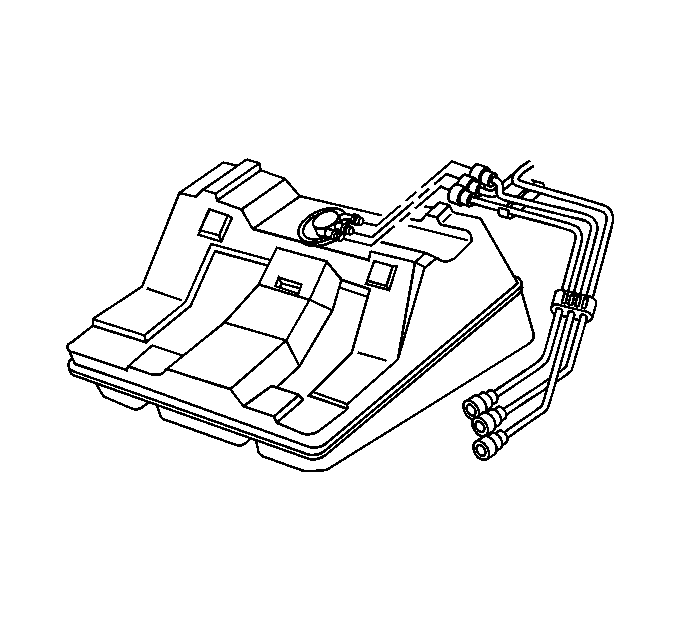
The fuel tank is used to store fuel for the vehicle. The tank is located in the rear of the vehicle and is held in place by two metal straps that are attached to the underbody. The fuel tank is made of steel and is coated internally with a special corrosion inhibitor. Due to the internal coating of the fuel tank, the fuel tank is not repairable. The fuel tank shape includes a reservoir in order to maintain a constant supply of fuel around the fuel pump strainer during low fuel conditions and aggressive vehicle maneuvers. A fuel tank filler pipe check-valve tube is attached to the fuel tank and extends from the fuel tank inlet to the reservoir. The fuel tank filler pipe check-valve is located inside the fuel tank filler pipe check-valve tube and prevents fuel from splashing back out of the fuel tank filler pipe during refueling.
The tank also contains a fuel vapor vent valve with roll-over protection. The vent valve also features a two phase vent calibration which increases fuel vapor flow to the canister when operating temperatures increase the tank pressure beyond an established threshold.
The fuel tank contains 3 rollover valves that prevents fuel from entering the fuel pipes in the event of a vehicle rollover. The rollover valves are not repairable.
Fuel Tank Filler Pipe
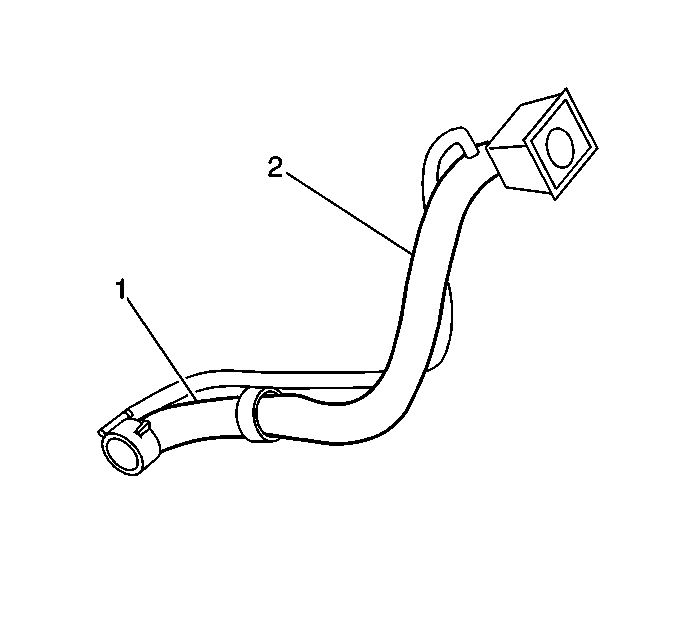
In order to prevent refueling with leaded fuel, the fuel tank filler pipe (2) has a built-in restrictor and deflector. The fuel tank filler pipe is connected to the fuel tank filler extension (1) by clamps.
Fuel Tank Filler Pipe Cap
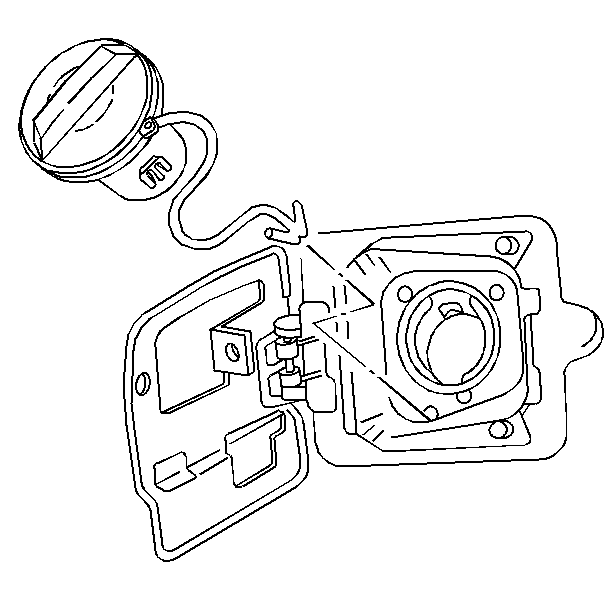
The fuel tank filler pipe is equipped with a quarter-turn type fuel tank filler pipe cap. In order to install the fuel tank filler pipe cap, turn the fuel tank filler pipe cap clockwise until a clicking noises is heard. A built-in device indicates that the fuel tank filler pipe cap is fully seated. A fuel filler cap that is not fully seated, may cause a malfunction in the emission system. The fuel fill cap has a tether connected to the fuel fill door.
Modular Fuel Sender Assembly

The modular fuel sender assembly consists of the following major components:
| • | Fuel sender strainer |
| • | Fuel pump strainer |
| • | Roll-over valve |
| • | Fuel level sensor |
| • | Fuel tank pressure sensor. |
Fuel Level Sensor
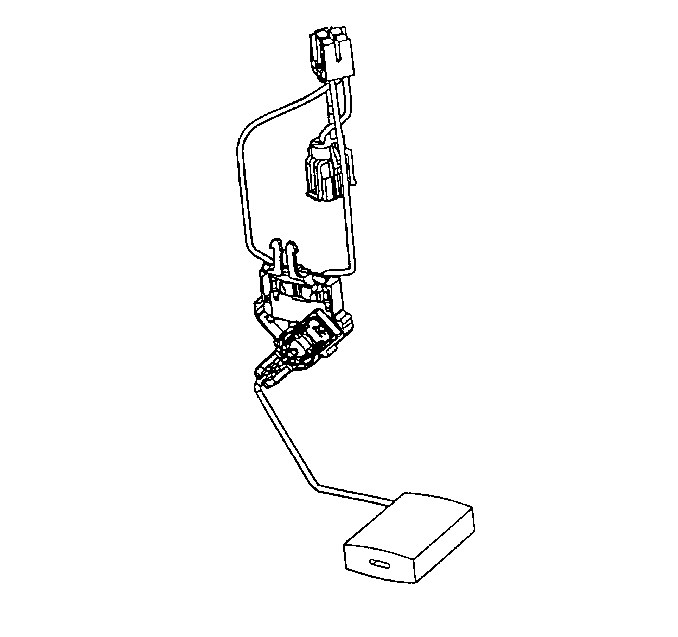
The fuel level sensor consists of the following components: float, the wire float arm, and the ceramic resistor card. The fuel level sensor is mounted on the modular fuel sender assembly and is used as an input to the PCM. The PCM uses this information as a fuel level input for various diagnostics. In addition the PCM transmits the fuel level over the Class 2 communication circuit to the instrument panel (IP) cluster. This information is used for the IP fuel gauge, and low fuel warning indicator if applicable.
Fuel Pump
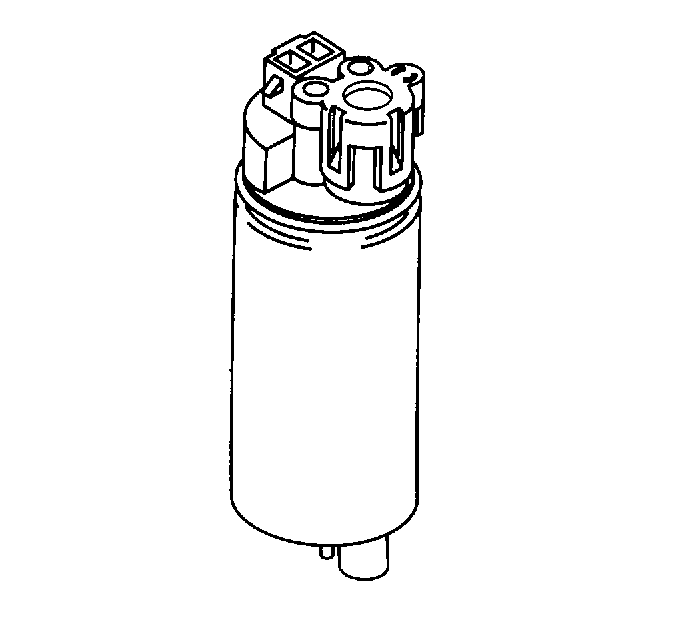
The fuel pump is mounted in the fuel reservoir within the modular fuel sender. The fuel pump is an electric high pressure gerotor pump. The fuel is pumped to the fuel rail at a specified flow and pressure. Excess fuel returns to the fuel tank by a return pipe. The fuel pump delivers a constant flow of fuel to the engine even during low fuel conditions and aggressive vehicle maneuvers. The electric fuel pump operation is controlled by the Powertrain Control Module (PCM) through a fuel pump relay. The fuel pump flex pipe acts to dampen the fuel pulses and noise generated by the fuel pump. The fuel pump is serviced as part of the modular fuel sender assembly.
Roll-over valve
The fuel system contains a rollover valve that prevents fuel from entering the fuel pipes in the event of a vehicle rollover. The rollover valve is serviced as part of the modular fuel sender assembly.
Fuel Pump Strainer
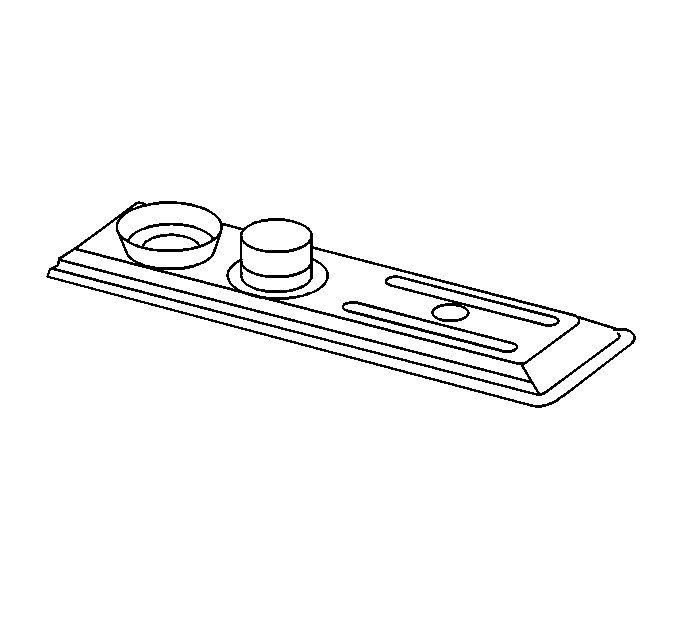
The fuel pump strainer attaches to the lower end of the modular fuel sender assembly. The fuel pump strainer is made of woven plastic. The functions of the fuel pump strainer is to filter contaminants and to wick fuel. The life of the fuel pump strainer is generally considered to be that of the fuel pump, the strainer is self-cleaning and normally requires no maintenance. Fuel stoppage at this point indicates that the fuel tank contains an abnormal amount of sediment or water, in which case the tank should be thoroughly cleaned and replace the plugged fuel pump strainer with a new one.
In-Pipe Fuel Filter
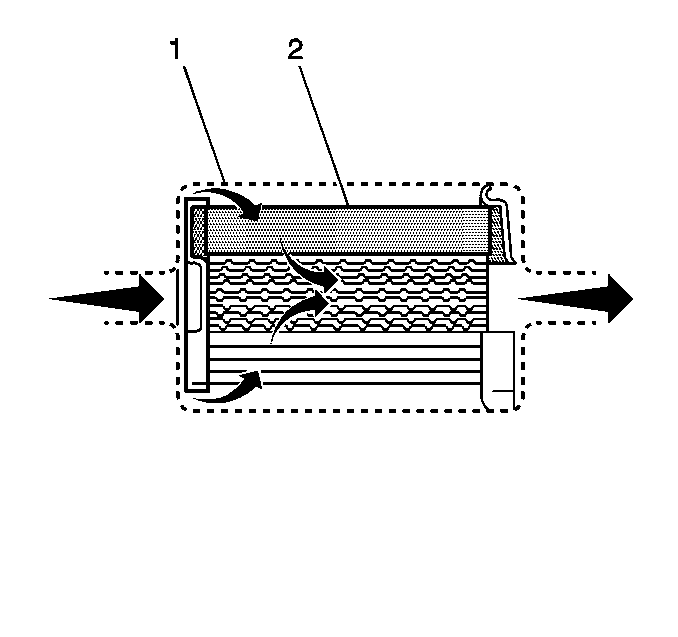
The fuel feed pipe has a steel fuel filter installed ahead of the fuel injection system. The paper filter element (2) traps particles in the fuel that may damage the injection system. The filter housing (1) is made to withstand maximum fuel system pressure, exposure to fuel additives, and changes in temperature. The fuel filter has a quick-connect inlet fitting and a threaded outlet fitting. The threaded fitting is sealed with an O-ring. There is no service interval for fuel filter replacement. Replace a restricted fuel filter.
Fuel Feed and Fuel Return Pipes
The fuel feed and fuel return pipes carry fuel from the modular fuel sender assembly to the fuel injection system and back to the modular fuel sender assembly.
Quick-Connect Fittings
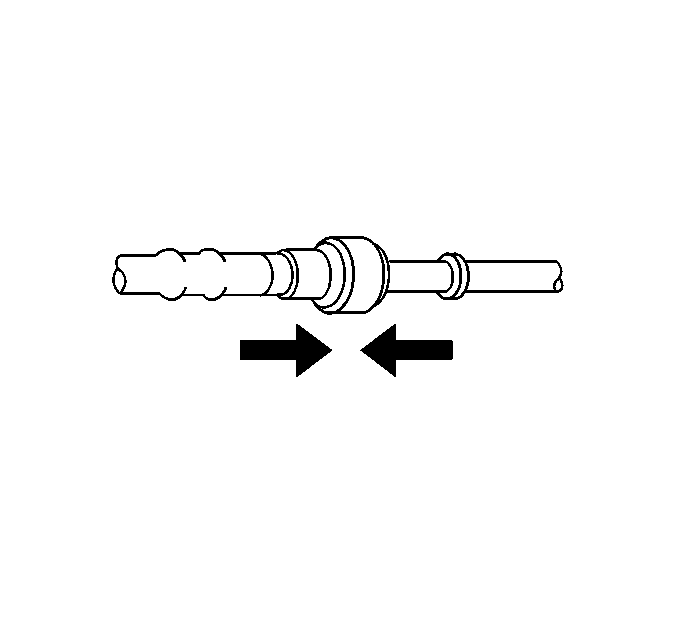
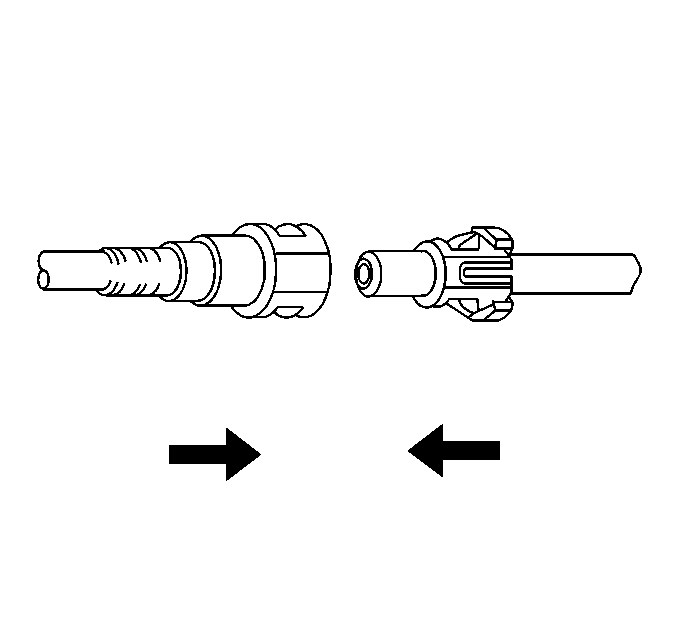
Quick-connect type fittings provide a simplified means of disconnecting and connecting fuel system components. Depending on the vehicle type, there are two types of quick-connect fittings. Each are used at different locations in the fuel system. Each type of quick-connect fitting consists of a unique female connector and a compatible male fuel pipe end. An O-ring is located inside the female connector, witch provides the fuel seal. Integral locking tabs or fingers hold the quick-connect fittings together.
Nylon Fuel Pipes
Nylon fuel pipes are designed to perform the same job as the steel or rubber fuel lines they replace. Nylon pipes are constructed to withstand maximum fuel system pressure, exposure to fuel additives and changes in temperature. There are two sizes used: 3/8" ID for the fuel feed, and 5/16" ID for the fuel return and are used on the modular sender. Nylon fuel pipes are somewhat flexible and can be formed around gradual turns. However, if forced into sharp bends, nylon pipes will kink and restrict fuel flow. Also, once exposed to fuel, nylon pipes may become stiffer and are more likely to kink if bent too far. Special care should be taken when working on a vehicle with nylon pipes.
Fuel Pipe O-Rings
Fuel feed and return pipe threaded connections at the fuel rail and fuel filter are sealed with replaceable O-ring seals. These O-rings seals are made of special material, and should only be serviced with the correct service part.
